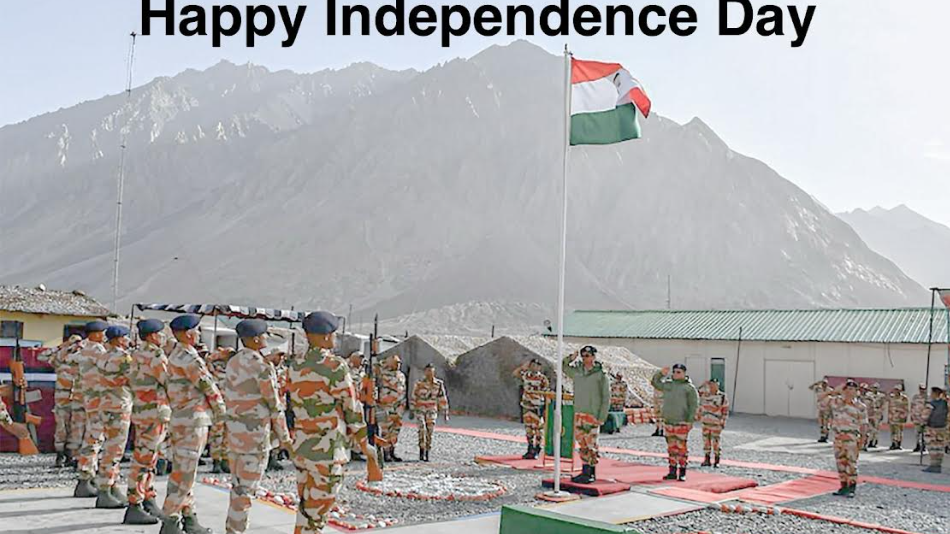Arun Joshi
From a nightmarish scenes emanating from Galwan Valley in eastern Ladakh where 20 Indian soldiers were killed in a clash with aggressive Chinese troops in June 2020, today the Indian tricolour flies unchallenged in the Himalayan Valley establishing the fact that the Indians are unchallenged and hold complete supremacy there.
On Thursday, 78th Independence Day of the country, Indo-Tibetan Border Police personnel hoisted the tricolour and saluted it with Himalayas being the witness to Indian supremacy in complete terms. Some may rub their eyes in disbelief, but flying tricolour is irrefutable evidence that how the things have been stabilized in one of the most contentious points along the Line of Actual Control in eastern Ladakh.
At one point in time, it appeared that India was at a disadvantageous position. Galwan had become a symbol of a loss, but now tables have been turned. India is in full control of the Valley with no threat close to the Valley which overlooks icy Galwan River, and a strategic asset. China has got its lesson that India has grit and determination to overturn any adverse situation with its patience and strategy.
It was on the intervening night of June 15/16, 2020, when the clashes took place. Twenty Indian soldiers lost their lives in clashes initiated by the Chinese troops who had come menacingly close to the LAC threatening Indian positions. China never disclosed how many of its soldiers were lost in the clashes which grabbed the international headlines, showing Galwan Valley as a flashpoint that could trigger a sort of mini war on the LAC.
Galwan Valley bruised the Indian image. It was referred to as a point in which India suffered greater losses than China. The nation was outraged, and it led to a noisy “boycott China (Chinese products)” across the country.
The June 15/16, 2020 clashes were an outcome of China inflicted situation at LAC in eastern Ladakh. China had mobilized its troops close to the LAC, in violation of the treaties to ensure peace and tranquillity on the border line. As per the treaties signed in 1990s, both to maintain a distance from the LAC and not to create any face to face situations. But China moved its troops with lot of war machinery close to the LAC, making India suspicious of its actions. The Indian objections were not entertained and ultimately it was resolved that the matters would be sorted out through dialogue. The military commanders of China and India met on June 6, 2020 , and it was resolved India and China would not enter into any ugly situation and the Chinese troops, keeping in view the sanctity of the Lac, should retreat to their original location. But when the Indian troops went to verify whether the Chinese troops had withdrawn from Galwan Valley, they were attacked with clubs, cement poles studded with nails and stones. This was a savage attack at the Himalayan height of 13,620 feet above the sea level shattered the mutual trust between the two armies , and questions whether the situation would ever stabilize cropped up .
The Indian army however displayed its strategic patience and continued with dialogue and the military manoeuvrings. It took China by surprise when Indian troops captured Kailash Range heights, forcing the Chinese to come back to the negotiation table. They knew that they had lost the strategic heights and India had assumed a position of higher scale. That forced Chinese to clear Galwan Valley. Now a solid buffer zone is in place. Galwan is completely under the control of India.
Disclaimer: This is the personal opinion of the author. The views expressed in this write-up have nothing to do with www.prameyanews.com.
































